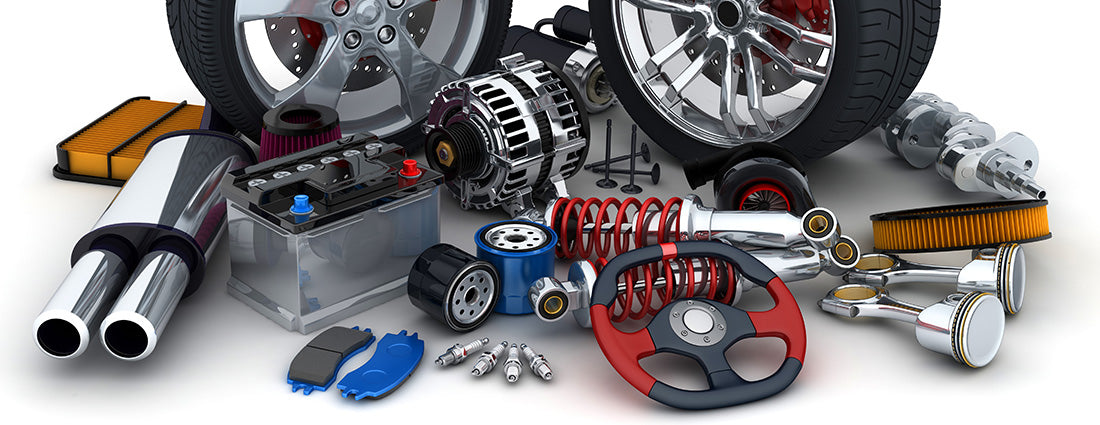
Table of Contents
Introduction
Automotive Repair- In the dynamic world of vehicle maintenance, knowledge is leverage. For drivers and car owners, automotive repair can quickly become an overwhelming financial and logistical burden. Yet, with foresight and a few intelligent strategies, costly trips to the mechanic and days lost in the shop can be significantly reduced. This guide provides seven smart automotive repair tips that save you time and money—practical, actionable advice that empowers vehicle owners to take control of their car’s condition without compromising quality or safety.
1. Embrace Preventive Maintenance to Avoid Expensive Surprises

A Strategic Approach to Longevity and Cost Efficiency
1. Embrace Preventive Maintenance to Avoid Expensive Surprises—this isn’t just advice; it’s a philosophy for vehicle ownership that distinguishes the prudent driver from the reactive one. Preventive maintenance, when practiced consistently, serves as a financial safeguard and performance enhancer, keeping your vehicle running like clockwork while averting wallet-draining breakdowns.
At its core, preventive maintenance involves servicing your vehicle based on time, mileage, or usage benchmarks rather than waiting for something to fail. This proactive regimen includes oil changes, fluid top-ups, tire rotations, belt inspections, battery checks, and more. Each action, while seemingly minor in isolation, cumulatively protects your engine, transmission, brakes, and overall drivability.
Neglect, on the other hand, is the silent killer. What begins as a skipped oil change could evolve into sludge buildup, reducing engine efficiency and eventually leading to catastrophic failure. Worn brake pads ignored long enough may destroy rotors, turning a $150 job into a $900 ordeal. Such scenarios illustrate precisely why 1. Embrace Preventive Maintenance to Avoid Expensive Surprises isn’t optional—it’s essential.
Modern vehicles are marvels of engineering, packed with sensors and systems that thrive under consistent care. Following the manufacturer’s maintenance schedule ensures optimal fuel efficiency, emission control, and mechanical harmony. It also prolongs component life, delays the need for major repairs, and retains resale value.
The economic impact is significant. Routine maintenance costs only a fraction of emergency repairs. A well-maintained vehicle requires fewer part replacements and experiences less downtime. And when selling or trading in your vehicle, a documented service history enhances buyer confidence and justifies a higher asking price.
Beyond economics, preventive maintenance delivers peace of mind. Knowing your tires are balanced, brakes responsive, and fluids at optimal levels creates confidence in every commute and cross-country drive. It minimizes roadside mishaps and eliminates the anxiety of unexpected warning lights flashing mid-journey.
Technology has made this discipline easier than ever. Mobile apps and digital service records allow for precise tracking of maintenance intervals. Many shops now offer reminder services via text or email, ensuring you never miss a crucial checkup.
Ultimately, adopting the mindset of 1. Embrace Preventive Maintenance to Avoid Expensive Surprises transforms car care from an afterthought into a strategic habit. It’s the difference between coasting smoothly into the future—or grinding to a costly halt.
2. Master the Art of Diagnostic Tools

Unlocking Your Vehicle’s Inner Voice for Smarter Maintenance
2. Master the Art of Diagnostic Tools—a phrase that encapsulates the future of intelligent car ownership. In a world where vehicles are evolving into complex, computer-regulated machines, understanding the language of diagnostic tools is no longer reserved for mechanics alone. It’s a crucial skill for anyone seeking to maintain control over their vehicle’s health and longevity.
Onboard diagnostics, or OBD systems, have transformed the way cars communicate issues. The modern vehicle functions as a rolling data center, equipped with dozens of sensors monitoring everything from oxygen levels to throttle position. When something goes awry, these systems don’t just illuminate a check engine light—they generate codes that pinpoint the source of the issue. But these codes are only valuable if you know how to interpret them.
Learning how to use an OBD2 scanner is the first step in your diagnostic journey. These compact devices, once exclusive to professionals, are now readily available for consumer use. Plug it into the diagnostic port—typically found under the dashboard—and within seconds, it offers a readout of stored error codes, real-time data, and even freeze-frame information that shows what was happening when a fault occurred.
This intelligence is transformative. Rather than blindly replacing parts based on guesswork, you can identify specific failures—whether it’s a faulty mass airflow sensor or a misfiring cylinder—and address the root cause. It saves time, prevents unnecessary expenditures, and empowers you to speak the same technical language as your mechanic, ensuring more transparent repair conversations.
Beyond handheld scanners, smartphone-compatible diagnostic tools have gained traction. These Bluetooth-enabled devices pair with mobile apps, translating technical data into user-friendly dashboards. They offer a real-time window into your car’s vitals: fuel efficiency, coolant temperature, battery voltage, and more. Some even provide maintenance forecasts and driving behavior analysis, elevating the driving experience to one of high-tech precision.
Mastering these tools also means recognizing patterns. A single fault code may be benign, but recurring errors can indicate deeper systemic issues. Being attentive to trends in diagnostics enables preemptive action—before a small malfunction snowballs into a major repair.
In the long term, embracing the digital evolution of automotive diagnostics means redefining your role from passive driver to informed vehicle steward. 2. Master the Art of Diagnostic Tools is more than advice—it’s a mindset that aligns with modern engineering and responsible ownership. In a landscape where machines and software coalesce, those who understand the signals beneath the surface hold the power to drive smarter, safer, and farther.
3. Learn to Perform Simple Repairs at Home

Empowerment in the Driveway: DIY Repairs for the Modern Motorist
3. Learn to Perform Simple Repairs at Home is more than a cost-saving strategy—it’s a gateway to autonomy and confidence. In an age where dependency on professional services is high, mastering basic vehicle maintenance transforms car ownership into a hands-on, rewarding experience. No need for a full-fledged garage or years of mechanical study; just a few essential tools, some patience, and a willingness to learn.
Start with the fundamentals. Replacing windshield wiper blades, changing air filters, and swapping out spark plugs are entry-level tasks that require minimal tools but yield significant benefits. These components wear out predictably and are often marked up when handled by service centers. Performing these jobs at home means more control over both quality and cost.
Oil changes—a cornerstone of engine health—are also well within the scope of a home mechanic. With a drain pan, a wrench, and a bit of space, you can manage your vehicle’s lubrication schedule without setting foot in a shop. The process, while slightly messy, is a rite of passage for any DIY enthusiast. It also allows for better oil selection and awareness of what’s really going into your engine.
Even battery maintenance and replacement can be demystified. With proper safety precautions, this task becomes a quick and satisfying fix. Checking terminals for corrosion, testing voltage with a multimeter, and ensuring tight connections are small acts that prevent major roadside headaches.
Beyond parts replacement, small repairs often involve diagnostics and correction. A loose gas cap triggering a check engine light, a dislodged fuse causing an electrical failure—these are the sorts of minor issues that, with a little research, can be resolved in minutes.
Learning to handle these simple repairs is also a powerful antidote to the rising costs of automotive care. Labor charges, diagnostic fees, and inflated parts pricing can quickly add up. With a foundational knowledge and a reliable guide—whether a repair manual or a trusted online tutorial—you can take back control and make educated decisions about what truly requires a shop visit.
More importantly, working on your own car builds a tactile connection between driver and machine. The rhythmic clink of tools, the sight of clean oil pouring into a crankcase, the satisfying snap of a new filter being secured—these sensory experiences root you more deeply in the care and performance of your vehicle.
3. Learn to Perform Simple Repairs at Home encourages not only frugality, but resilience. It cultivates a self-reliant spirit that every car owner can benefit from, especially when faced with the unexpected. In your own garage or driveway, you hold the power to fix, maintain, and understand your car better than ever before.
4. Buy Quality Parts—But Know Where to Shop
Smart Spending: Navigating the Parts Market with Precision
4. Buy Quality Parts—But Know Where to Shop is more than just consumer advice—it’s a strategy that safeguards performance, longevity, and peace of mind. Whether replacing brake pads, spark plugs, or alternators, the integrity of the part you install directly influences your vehicle’s reliability. But quality doesn’t always mean premium price, and the source of your purchase often defines what you’re truly getting.
Original Equipment Manufacturer (OEM) parts are generally considered the gold standard. Engineered to exacting specifications, they ensure seamless compatibility and consistent performance. However, OEM components can be expensive, particularly when purchased directly from dealerships. That’s where strategic sourcing becomes vital.
Aftermarket parts, when chosen carefully, can offer comparable—or even superior—performance at a fraction of the cost. Reputable brands like Bosch, Denso, and Moog have built solid reputations by delivering dependable components. These manufacturers often introduce innovations or materials not found in OEM designs. Still, discernment is key. The aftermarket space is vast, and not every brand maintains the same commitment to excellence.
Where you shop makes a world of difference. Brick-and-mortar auto parts stores provide immediacy and in-person guidance but often carry higher markups. Online retailers, such as RockAuto, FCP Euro, or Parts Geek, offer broader inventories and competitive pricing. Some even provide lifetime warranties and generous return policies, giving consumers additional assurance. Meanwhile, e-commerce giants like Amazon and eBay can be hit or miss—excellent for deals but fraught with counterfeit risks if the seller is not verified.
Avoid bottom-shelf, no-name brands or suspiciously cheap options. These parts may lack proper testing, quality materials, or regulatory compliance. Saving money up front might lead to premature failure or even damage to other vehicle systems. In some cases, such as with timing components or braking systems, the risk simply isn’t worth the gamble.
Also consider certified used or refurbished parts, particularly for rare or high-value components. Salvage yards and specialized recyclers can be gold mines for quality OEM parts at reduced prices, especially for older vehicles. Just ensure the part’s condition, compatibility, and warranty are clearly stated before purchasing.
Always verify fitment using your vehicle’s VIN or exact specifications. One incorrect part can waste time, cause damage, or delay repairs. Many online platforms now offer intelligent search tools to match parts precisely to your make and model.
4. Buy Quality Parts—But Know Where to Shop underscores the power of informed purchasing. In a marketplace overflowing with options, the savvy buyer combines product knowledge with strategic sourcing to achieve the perfect balance of value and performance. Your car deserves precision—don’t compromise where it counts most.
5. Don’t Ignore Unusual Sounds or Smells
The Warning Signals Your Car Sends
5. Don’t Ignore Unusual Sounds or Smells—this simple yet critical advice can save you time, money, and potential headaches. When driving, your vehicle constantly communicates with you, sometimes in subtle ways. One of the most overlooked forms of communication comes in the form of strange noises and odors. These cues are more than just irritations—they are often early warning signs that something is amiss under the hood.
Unusual sounds, such as squealing, grinding, or clunking, often point to specific mechanical issues. For example, a high-pitched squeal when applying the brakes could indicate worn brake pads. While this may seem like a minor issue, delaying the replacement could lead to further damage, including the wear down of the rotors, resulting in expensive repairs. A grinding noise, however, is a more immediate concern, often signaling that the brake pads have worn down completely, causing metal to scrape against metal. Ignoring this could compromise the vehicle’s ability to stop safely, posing a significant safety risk.
Similarly, if you hear a clunking or rattling sound while driving, it could be a sign of issues with the suspension system or loose parts. Worn-out shocks, struts, or ball joints can lead to poor handling and dangerous driving conditions. This is especially true when driving over bumps or rough terrain. If such sounds persist, prompt attention from a mechanic is essential.
Equally important are unusual smells that may emanate from the engine, exhaust, or cabin. A burning smell could indicate something as benign as overheated engine oil or a more serious issue like an electrical short or leaking fluids. A sharp, sweet odor is often linked to coolant leaking from the radiator or hoses, signaling potential overheating problems. In either case, these smells should never be ignored. Overheating can cause significant engine damage, resulting in costly repairs.
Musty or moldy smells inside the vehicle could indicate a leaking air conditioning system or damp carpet. This issue may be a nuisance at first, but it can lead to the growth of mold or mildew in the vehicle’s interior, potentially affecting air quality and even causing health issues. It’s important to address this issue promptly by inspecting seals and vents for leaks.
Fuel odors are another sign that something is wrong, often pointing to a leak in the fuel system. Whether it’s a minor leak in a hose or something more serious, driving with a fuel smell inside the cabin is highly dangerous. A fuel leak can lead to catastrophic engine failure or even a fire, so immediate action is crucial.
5. Don’t Ignore Unusual Sounds or Smells—they are your vehicle’s way of warning you that something is wrong. Pay attention to these early indicators to prevent further damage and ensure both your safety and the longevity of your car. Taking action at the first sign of trouble can save you from a much larger problem down the road.
6. Build a Relationship with a Trustworthy Mechanic
While DIY repair is invaluable, certain issues demand professional expertise. When that time comes, a trustworthy mechanic is indispensable. Rather than hopping from shop to shop, find a certified technician with a proven track record and build rapport.
Familiarity breeds transparency. A good mechanic learns your vehicle’s quirks, offers fair diagnostics, and advises preventive measures rather than waiting for parts to fail. Loyalty often leads to discounts, faster service, and honest assessments that save both time and cost in the long term.
7. Use Mobile Apps to Track Repairs and Monitor Performance
Smartphones aren’t just for navigation—they’re powerful tools for managing your vehicle’s health. Dozens of apps track service history, maintenance schedules, and fuel economy. Some sync directly with diagnostic tools for live data streaming.
Apps like CarFax Car Care, Drivvo, or Simply Auto offer reminders and performance insights, helping you stay ahead of service intervals. With your repair history in one place, you avoid redundant maintenance, catch recurring issues, and gain insights into operating costs. That’s efficiency at your fingertips.
Conclusion
Automotive repair doesn’t have to be a frustrating or financially draining experience. These seven smart automotive repair tips that save you time and money put the power back into your hands. From mastering diagnostics to leveraging mobile tools, each strategy contributes to a more informed, cost-effective approach to car ownership. As vehicle technology continues to evolve, staying one step ahead ensures not just savings—but peace of mind on every road you travel.




